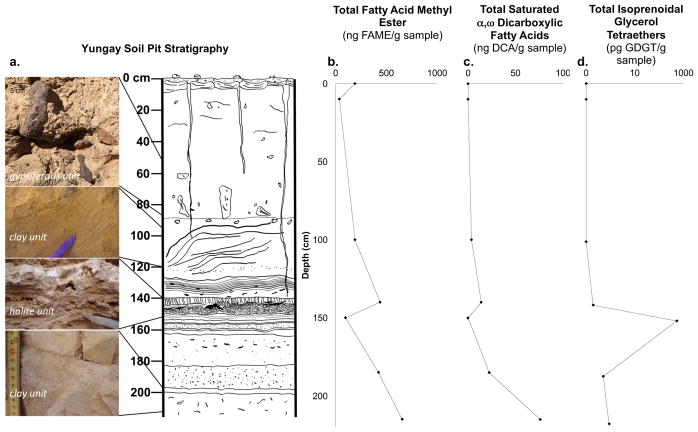Figure 1.
Yungay Soil Pit Stratigraphy & Key Lipid Abundances: a) The soil pit contains three major units: gypsiferous soils (0–90 cm depth), clay-rich units (> 90 cm depth), and a 10 cm-thick halite unit that interrupts clay units at 150 cm depth. Gypsiferous soils are matrix-supported and contain angular lithics. A clay unit at 100 cm depth contains centimeter-sized laminations composed of course sand. A clay unit at 140 cm depth contains fine sub-cm sized laminations (Supplementary Fig. 3). The massive, well-cemented halite unit (~140–150 cm) has two major morphologies: vertical, crystalline structures and mottled halite. Beneath are alternating bands of well-sorted clay units and contain fibrous plant fragments (cm-size) that become more concentrated with depth. A more detailed description of the stratigraphic profile is provided by (Ewing et al., 2006; 2008). b, c, d) Total abundances of FAME, DCA, and Isoprenoidal GDGT were found to increase with depth with the exception of the halite unit (150 cm). Isoprenoidal GDGT and DCA were absent from upper gypsiferous soil. Isoprenoidal GDGTs are plotted on a logarithmic scale due to the presence of a high relative abundance of Archaeol in the halite unit.

